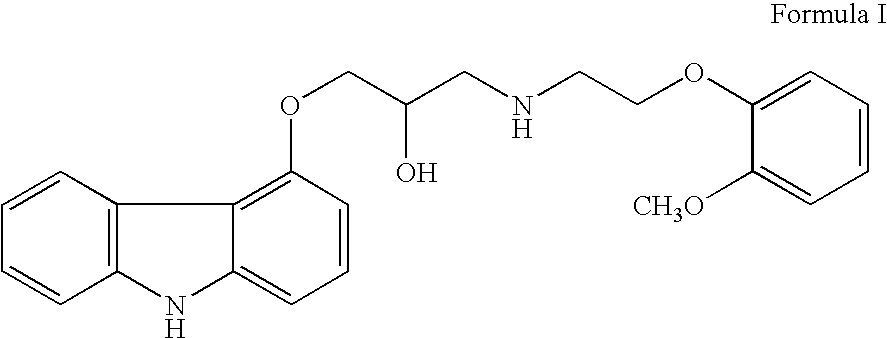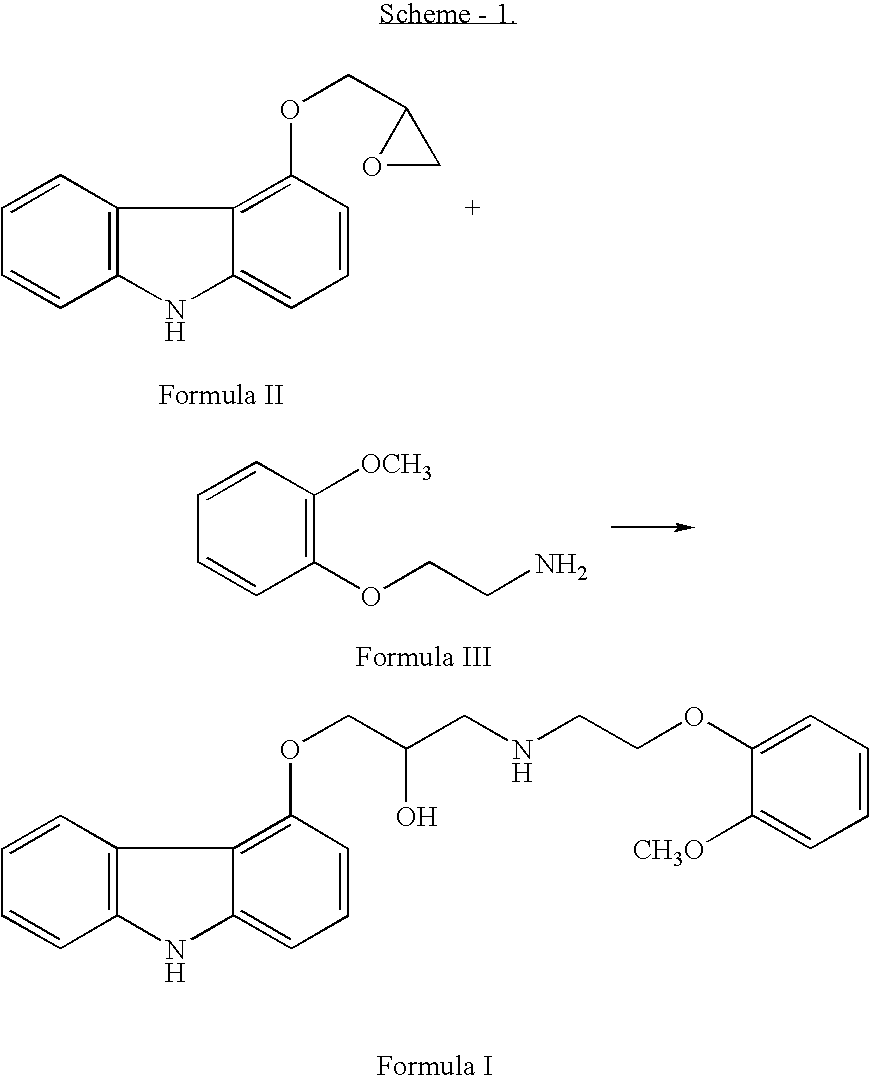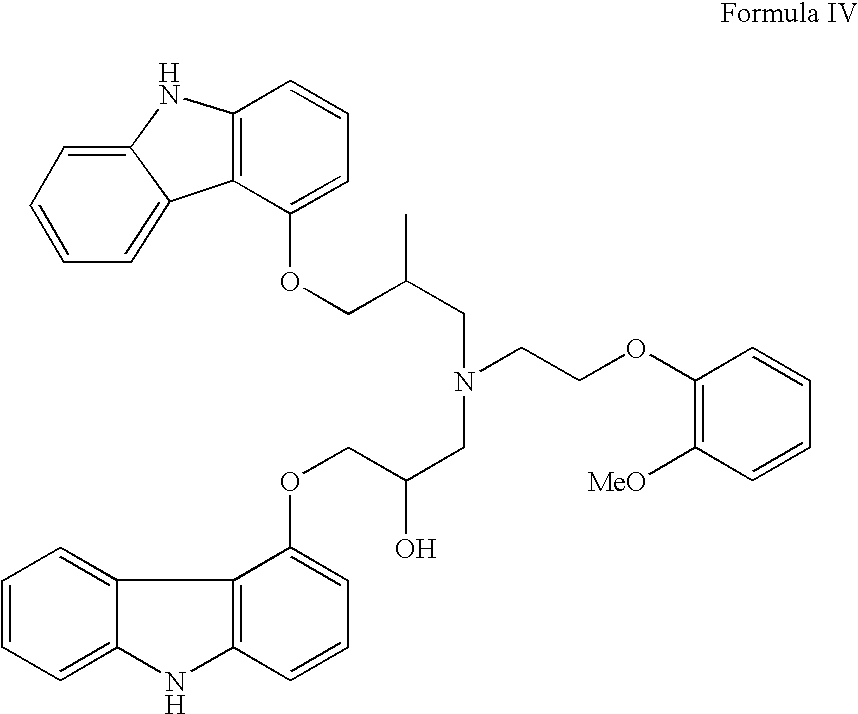Process for the preparation of carvedilol and its salts
a technology of carvedilol and salt, which is applied in the field of preparation of carvedilol and its salt, can solve the problems of uneconomical process, unsatisfactory industrialization process, and cumbersome industrial production of compound
- Summary
- Abstract
- Description
- Claims
- Application Information
AI Technical Summary
Benefits of technology
Problems solved by technology
Method used
Image
Examples
example 1
Preparation of PTSA Salt of Carvedilol
[0025] a) In a dry reaction flask, 120 gm (0.502 moles) of 4-(2,3-epoxypropoxy)carbazole of Formula II, 188.7 gm (1.13 mole) of 2-(2-methoxy phenoxy)ethylamine, and 1200 ml dimethylsulphoxide (DMSO) were charged under dry nitrogen atmosphere. The reaction mass was heated to about 70° C. till completion of reaction (about 20 hours), and then the reaction mass was cooled to 30° C. and 1200 ml water was added to it. The crude product was extracted with dichloromethane (1200 ml), and the dichloromethane layer was washed with water. The dichloromethane layer was mixed with 240 ml water, followed by the addition of 55.8 gm p-toluene sulphonic acid (PTSA) to attain a pH in the range of 7 to 8. After stirring, the layers were separated and the organic layer was washed with water. [0026] b) Above organic layer was taken in a reaction flask and to it PTSA (about 130 gm) was added to get a pH of the reaction mass about 4-5. After stirring, the PTSA salt o...
example 2
Preparation of Crude Carvedilol
[0027] 190 gm of Carvedilol PTSA salt was taken in a flask, which was mixed with 1600 ml ethyl acetate, and 10% aqueous sodium carbonate solution (about 950 ml) till the pH is basic. The ethyl acetate layer was separated and distilled under vacuum to obtain a residue. 250 ml Toluene was added to the resulting residue after distillation of ethyl acetate and the precipitate obtained was filtered and dried to obtain 118 gm crude Carvedilol (88% yield).
example 3
Purification of Carvedilol
[0028] 110 gm of crude carvedilol was dissolved in about 1300 ml of ethyl acetate at elevated temperature of 76 to 80° C. to obtain a clear solution and optionally the clear solution was treated with charcoal and filtered to remove the insoluble. The ethyl acetate solution was concentrated to about ⅓rd and cooled the solution to a temperature of 20-30° C. to precipitate pure carvedilol. The obtained crystals were filtered off and dried to obtain 88 gm of pure carvedilol (80% yield).
PUM
| Property | Measurement | Unit |
|---|---|---|
| Polarity | aaaaa | aaaaa |
| Crystallization enthalpy | aaaaa | aaaaa |
Abstract
Description
Claims
Application Information
 Login to View More
Login to View More - R&D
- Intellectual Property
- Life Sciences
- Materials
- Tech Scout
- Unparalleled Data Quality
- Higher Quality Content
- 60% Fewer Hallucinations
Browse by: Latest US Patents, China's latest patents, Technical Efficacy Thesaurus, Application Domain, Technology Topic, Popular Technical Reports.
© 2025 PatSnap. All rights reserved.Legal|Privacy policy|Modern Slavery Act Transparency Statement|Sitemap|About US| Contact US: help@patsnap.com



